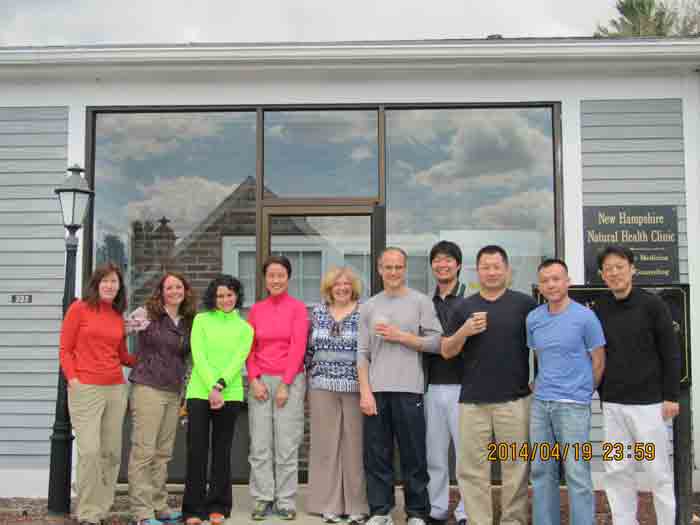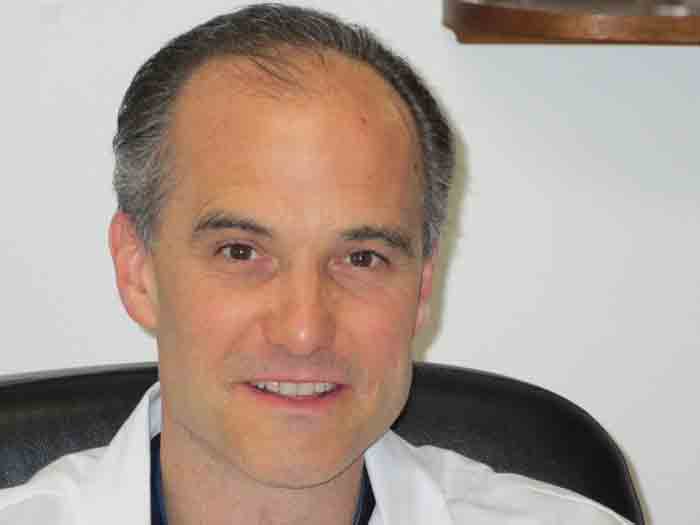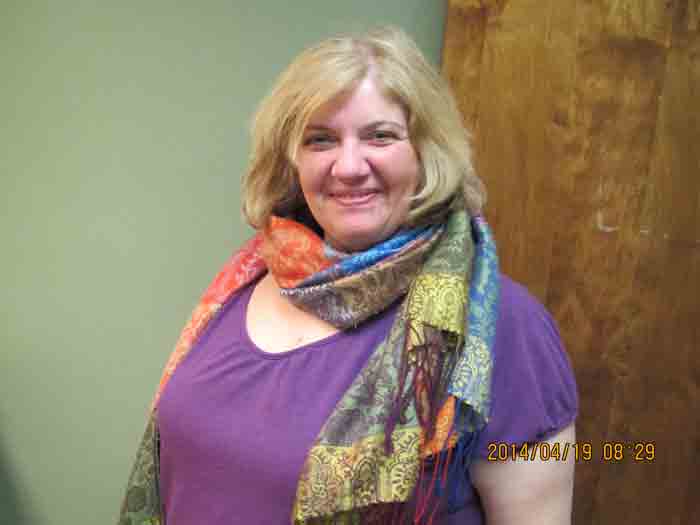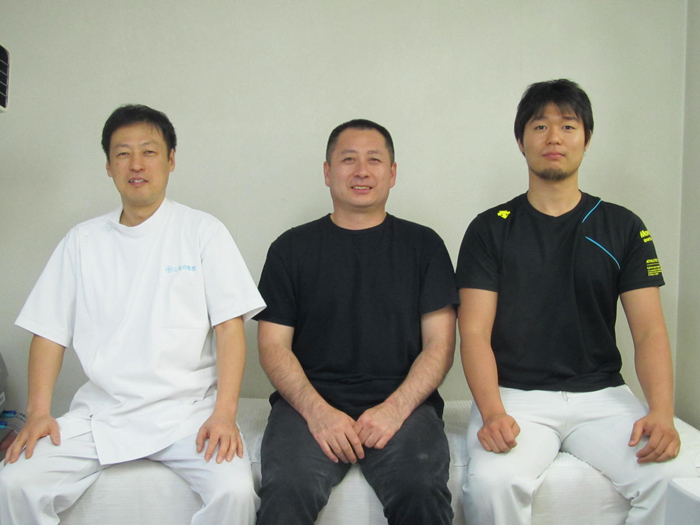Kinsei Manual Therapy: An Introduction to the United States
Bert Mathieson, ND, MA, RD, LD, CDE
Anne Kelty, ND, LMT
Kinsei Manual Therapy (KMT) is known as “Shintai Kinsei Ho” in Japan. “Shintai” means human body, “Kinsei” means balance or harmony, and “Ho” means method or technique. KMT is a whole-body style of manual therapy that is rooted in traditional Chinese medical theory.
When I (Dr Mathieson) was in naturopathic medical school, I particularly enjoyed physical medicine. I recognized the power of myofascial and osseous manipulative techniques, since they had revived me from many an injury as a former competitive college gymnast. During medical school I was introduced to Shintai Kinsei Ho by Osamu Machida, a fellow student from Japan. It was immediately apparent to me that Shintai Kinsei Ho was a uniquely naturopathic technique, since it strives to normalize healing within the whole body, not just fix the “part that hurts.” Unfortunately, it was also clear to me that there was no information or training available on KMT available in the United States. I asked Sam Machida to teach a few of us students some informal seminars in KMT, and a dream was born. I tucked away the idea of learning more about KMT until I was several years into my practice in New Hampshire. Sam had moved back to Japan and started a clinic integrating naturopathic medical concepts with KMT.
History and Current Usage of KMT in Japan
The founder of Shintai Kinsei Ho was Sensei Susumu Kamei. Sensei Kamei was interested in helping to heal Japanese soldiers who had been involved in World War II. KMT was started with this motivation in mind. In 1951, Sensei Kamei established the Kinsei Association of Japan, in collaboration with Syuzaburo Ito, PhD, a professor of physiology at Waseda University. Dr Ito performed research investigating the underlying physiological and biomechanical processes that are affected by Kinsei Manual Therapy.
 Until the early 1990s, a Master’s level KMT training program was taught through a college in Japan, and KMT practitioners were licensed by the Japanese government. After the closure of the college, the KMT technique was kept alive by its original practitioners and handed down to the next generation through mentorship programs.
Until the early 1990s, a Master’s level KMT training program was taught through a college in Japan, and KMT practitioners were licensed by the Japanese government. After the closure of the college, the KMT technique was kept alive by its original practitioners and handed down to the next generation through mentorship programs.
Currently, KMT is used widely across Japan as a whole-body healing technique. KMT is used for many conditions. Some of the more common disorders treated with KMT include low back pain, joint pain, digestive disorders, headaches, fatigue, anxiety, and fibromyalgia.
Theoretical and Philosophical Roots of KMT
The theory underlying KMT is that the body will adopt “torsion patterns.” These torsion patterns are caused by imbalances of neural and energetic inflow and outflow to and from the musculoskeletal system. This poor information transmission can be caused by physical stressors, mental stressors, poor nutrition, and postural habits. These torsion patterns are visible and can be diagnosed by static and dynamic analysis techniques performed by the Kinsei therapist. It is thought that the normalization of body torsion patterns increases delivery of nutrients and oxygen to the tissues, enhances detoxification of endogenous and exogenous toxins, and increases healing.
Sensei Kamei was familiar with osteopathic manual therapy techniques, and he sought to integrate these ideas with traditional Chinese medical theory. During a KMT session, acupressure and mobilization techniques are applied to acupuncture points and meridian lines in the body. Passive and active stretching techniques that correspond with meridian lines are also integrated into KMT. The founders of KMT noted 12 general torsion patterns in their patients. Each of these patterns corresponds to organ systems and meridian lines according to Chinese medical theory. The 12 torsion patterns are called “forms” (F1 to F12). The specific treatment techniques are individualized for each patient, based on movement testing and the form that most closely resembles the patient’s posture.
The History of KMT in the United States
The first formal class in KMT conducted in the United States was taught May 1-3, 2011 by Osamu Machida, BA, Kinsei Therapist (Japan); and Koichiro Tsutsui, BA, Kinsei Therapist (Japan). In 2013, Osamu Machida founded the Kinsei Institute of North America (KINA), in collaboration with Dr Bert Mathieson.1
In 2014, KMT classes offered through KINA were approved for continuing education credits for both naturopathic doctors (through Bastyr University) and acupuncturists (through the National Certification Commission for Acupuncture and Oriental Medicine).
Case Study
Miss G came to the office on July 16, 2012, with complaints of allergies, migraine headaches, joint pain and stiffness, chronic knee pain, anxiety, and fibromyalgia. She also had low energy and her activities of daily living were minimal. Her pain level was 4/10.
Treatment
July 16, 2012: Miss G’s first KMT treatment was performed. Form 4 was chosen, based on postural and movement analysis. KMT techniques were applied to T6, L2, and S5 spinal levels. KMT myofascial release techniques were also applied to the fingers and toes. After her first treatment, she had notable improvement in range of motion (ROM) on all movement planes, and reported pain as 0/10. Her post-KMT “homework” was to consume vitamin C, 2000 mg daily in divided doses, 8 glasses of water, and to use a neti pot for allergies.
Follow-ups
July 30, 2012: Miss G came to the office reporting swelling of her left hand, fatigue which caused her to have to nap on the weekend, and a sense of “brain fog.” The frequency of her left hand pain (previously a very common symptom) had reportedly decreased since her first KMT session. She reported feeling “less tension in her whole body.” Form 3 was chosen for her KMT session today. Post-treatment palpation revealed less fascial tension in both arms. Movement analysis showed increased ROM in her shoulders and arms bilaterally.
August 6, 2012: Miss G reported that her pain levels were between 7/10 to 9/10 over the past week, especially on the 2 days following treatment. Over the past week, she had episodes of nausea and diffuse body pain, and she stated that her hands “couldn’t hold anything.” Today her energy level was better, and her pain level was substantially decreased at 2/10. She reported that a colleague noticed “a difference” in her body and that her muscles looked “more relaxed and less rigid.” Her colleague also said she “looked like she had more energy.” Form 6 was chosen, and fascial release techniques were also applied to the fingers and toes. A multivitamin and digestive enzymes were added to her treatment plan.
August 13, 2012: Miss G returned to the clinic reporting no exacerbation of symptoms after her last treatment. Her pain level was 0/10. She was now able to work every day and reported improved digestion, no gas, and regular bowel movements 2-3 times daily. She reported that the neti pot had helped clear her allergy symptoms. Form 6 was chosen for KMT treatment. Post-treatment movement analysis revealed improved ROM on all movement planes.
August 21, 2012: Miss G stated that, despite having “cold symptoms several days last week and back pain,” her energy levels were higher than before starting KMT, and she was able to clean more than usual. Form 4 was chosen for her treatment.
Most recent follow-up: Miss G reported that she was having less pain, her activities of daily living had increased, her energy levels were higher, and that she was pleased that she now had enough stamina to go shopping after a long day of work.
 Bert Mathieson, ND, MA, RD, LD, CDE, was previously the nutrition consultant for the Canadian National Men’s Gymnastics Team, the nutritionist for Los Angeles Air Force Base, and competed at a national level in gymnastics. He completed his naturopathic doctorate at SCNM in Tempe, AZ, in 2004, and an internship at The Alaska Center for Natural Medicine in Fairbanks, AK, in 2005. Bert is currently the medical director at New Hampshire Natural Health Clinic. He is an OnCANP and ILADS member, and specializes in helping people with Lyme disease, cancer, and behavioral disorders. He enjoys competing in professional freestyle skateboarding, and placed 3rd in the national championships in 2012.
Bert Mathieson, ND, MA, RD, LD, CDE, was previously the nutrition consultant for the Canadian National Men’s Gymnastics Team, the nutritionist for Los Angeles Air Force Base, and competed at a national level in gymnastics. He completed his naturopathic doctorate at SCNM in Tempe, AZ, in 2004, and an internship at The Alaska Center for Natural Medicine in Fairbanks, AK, in 2005. Bert is currently the medical director at New Hampshire Natural Health Clinic. He is an OnCANP and ILADS member, and specializes in helping people with Lyme disease, cancer, and behavioral disorders. He enjoys competing in professional freestyle skateboarding, and placed 3rd in the national championships in 2012.
 Anne Kelty, ND, LMT, has more than 15 years experience in the field of naturopathic public health. In her practice, Dr Kelty integrates natural medicine with the physical, mental, emotional and spiritual aspects of healing. She specializes in pain management, diabetes, and gastrointestinal conditions including ulcerative colitis. Dr Kelty is an advocate for natural healthcare and a sought-after speaker on wellness and various health-related topics. Dr Kelty is fluent in English and Spanish. She is 1 of only 6 doctors in the United States that is trained in Kinsei Manual Therapy.
Anne Kelty, ND, LMT, has more than 15 years experience in the field of naturopathic public health. In her practice, Dr Kelty integrates natural medicine with the physical, mental, emotional and spiritual aspects of healing. She specializes in pain management, diabetes, and gastrointestinal conditions including ulcerative colitis. Dr Kelty is an advocate for natural healthcare and a sought-after speaker on wellness and various health-related topics. Dr Kelty is fluent in English and Spanish. She is 1 of only 6 doctors in the United States that is trained in Kinsei Manual Therapy.
References:
- Introducing a Unique Form of Japanese Manual Therapy to the World. Journal of Manipulative Therapeutics. 2013;21(7):1-12. [Article in Japanese]
- Japanese Manual Therapy Approved by the United States. Journal of Manipulative Therapeutics. 2014;22(7):2-9, 38-47. [Article in Japanese]










